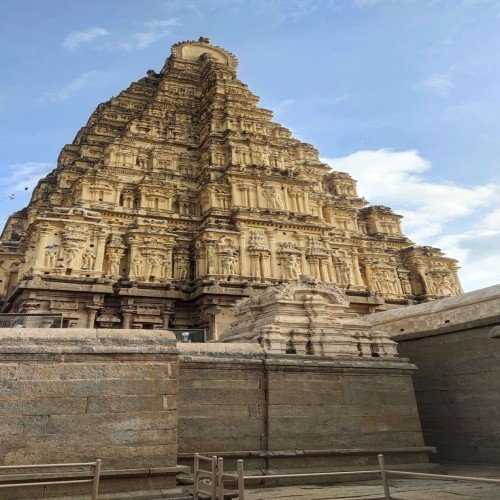
Discovering Patnitop: A Hidden Gem in Jammu and Kashmir
Posted at 13/Nov/24

Exploring Katra: The Gateway to Vaishno Devi
Posted at 13/Nov/24

Vaishno Devi Blog: A Spiritual Journey to the Divine Abode
Posted at 13/Nov/24

Discovering Hampi: A Journey Through the Ancient Ruins of Vijayanagara
Posted at 13/Nov/24
Written by Girish Vats
Posted at 31/Aug/23

Ayodhya, a city steeped in mythology, spirituality, and historical significance, holds a special place in the hearts of millions around the world. Nestled on the banks of the sacred Sarayu River, Ayodhya is renowned for its association with Lord Rama, making it a pilgrimage destination for Hindus and a symbol of harmony and faith. Join us as we embark on a virtual journey to the soul-stirring city of Ayodhya.
A Tale of Mythology and Belief
Ayodhya is synonymous with the epic Ramayana, and its story is interwoven with the life and journey of Lord Rama.
Ram Janmabhoomi: The Ram Janmabhoomi, believed to be the birthplace of Lord Rama, is at the heart of Ayodhya's significance. The complex is revered by millions and has been a focal point of devotion, cultural identity, and historical debates.
Hanuman Garhi: This temple, dedicated to Lord Hanuman, is perched on a hillock and offers panoramic views of the city. It's a site of reverence and devotion for both locals and visitors.
Harmony and Unity
Ayodhya is a living example of the coexistence of various faiths and the essence of India's secular fabric.
Ramayana Circuit: Ayodhya is part of the Ramayana Circuit, a series of pilgrimage destinations associated with the epic Ramayana. This circuit connects places significant to the epic's narrative.
Tulsidas Ghat: Pay your respects at Tulsidas Ghat, dedicated to the revered poet-saint Tulsidas, who composed the Ramcharitmanas, a monumental retelling of the Ramayana.
Cultural Richness
Ayodhya's cultural heritage is as vibrant as its spiritual legacy.
Ayodhya Art Festival: The festival celebrates the city's cultural diversity through art, music, and dance performances that showcase the region's traditions and creativity.
Sarayu Aarti: The Sarayu Aarti, performed in the evenings, is a mesmerizing spectacle where devotees offer prayers and float diyas (oil lamps) in the sacred river.
Planning Your Visit
Best Time to Visit: The cooler months from October to March are ideal for exploring Ayodhya due to the pleasant weather.
Cultural Sensitivity: Ayodhya is a revered pilgrimage site. Dress modestly and show respect for local customs and traditions.
Ram Navami: Consider visiting during Ram Navami, Lord Rama's birthday, to witness grand celebrations and religious processions.
In Conclusion
Ayodhya is not just a city; it's a repository of devotion, harmony, and the power of faith. It's a place where the divine meets the mortal, and history meets mythology. The stories of Ayodhya are stories of humanity's connection with the divine, and its tapestry is woven with threads of spirituality, culture, and unity. A visit to Ayodhya is an opportunity to immerse yourself in the sacred currents that flow through this timeless city and to witness the embodiment of faith, devotion, and coexistence that defines India's soul.
Tour managers can explain well about their regions, so it is the best way to feel real experience and enjoy beautiful culture of that region
Copyright © Disha Holidays 2024-2025 | All Right Reserved